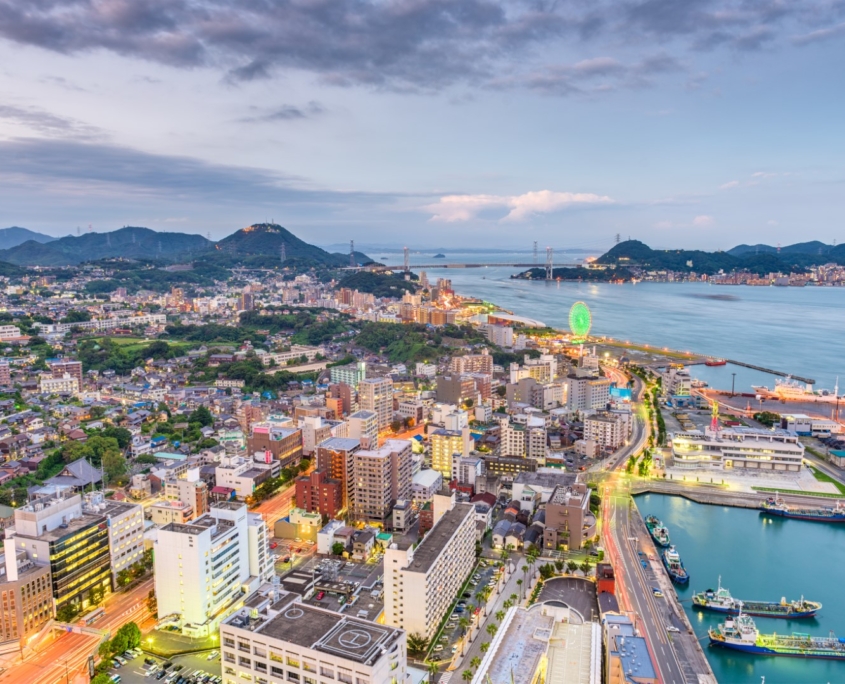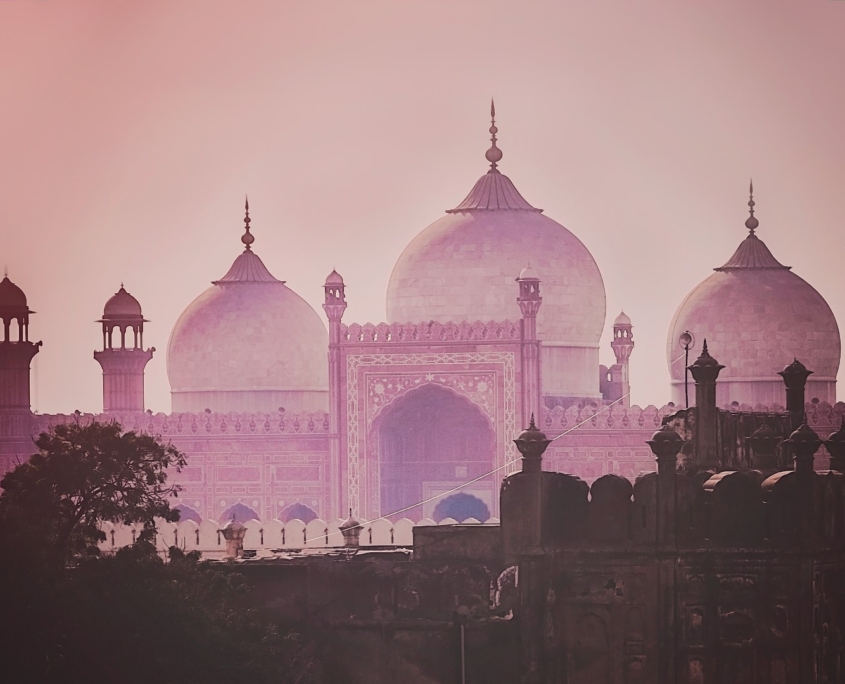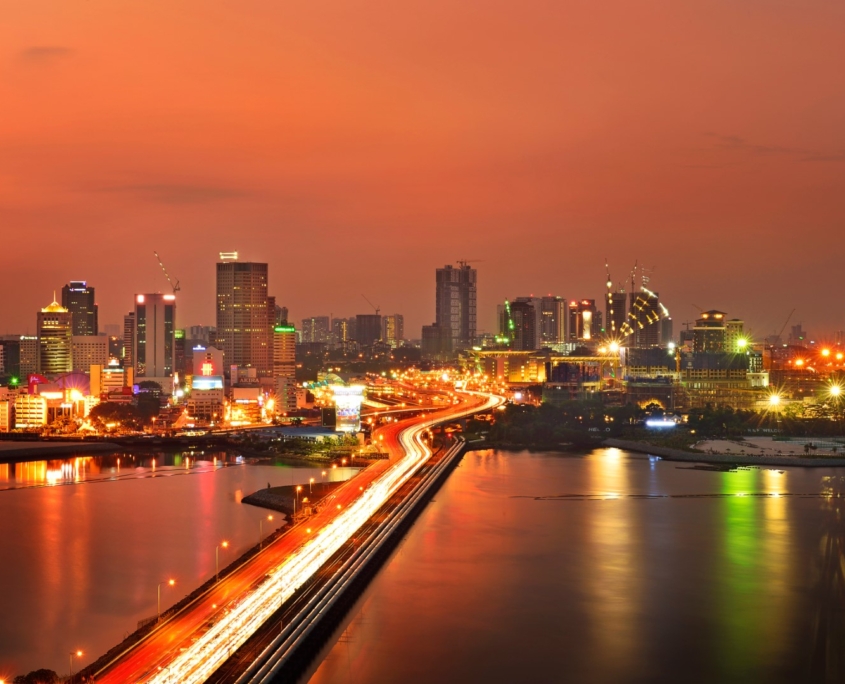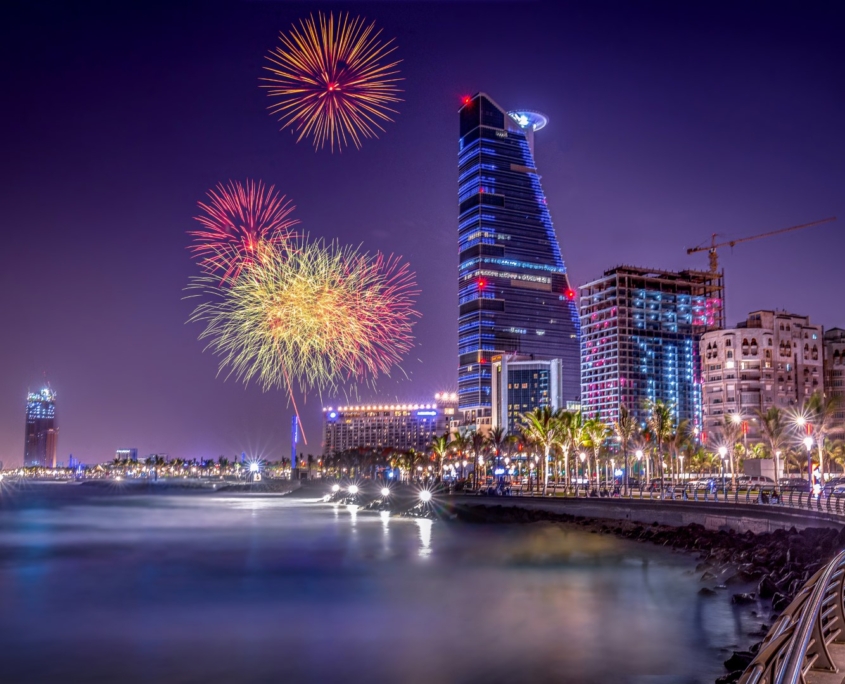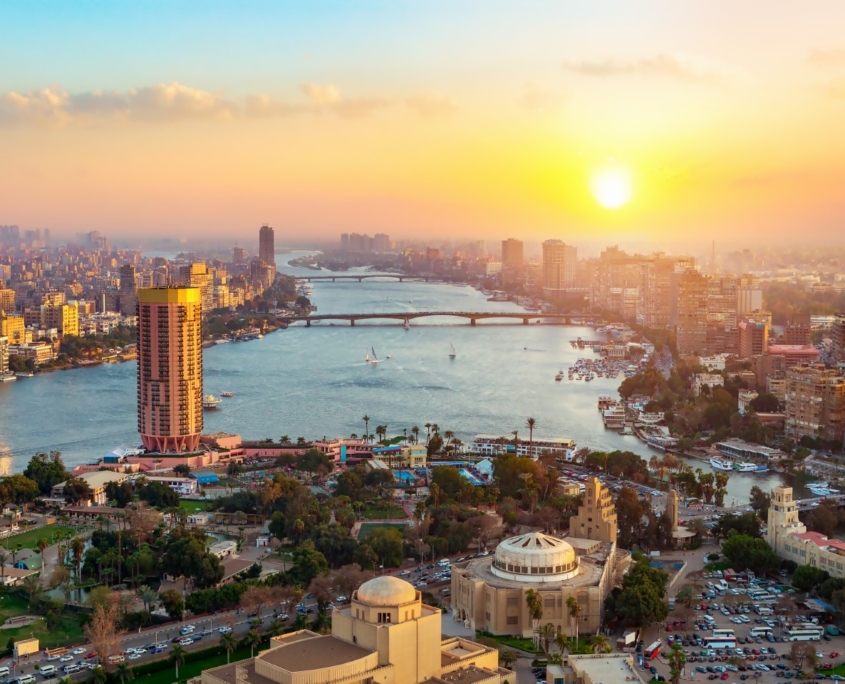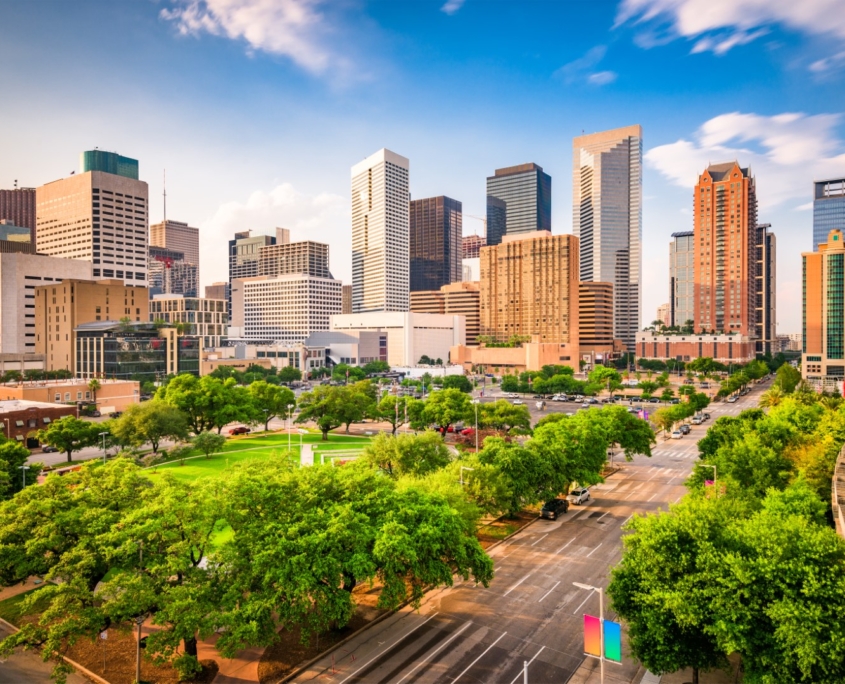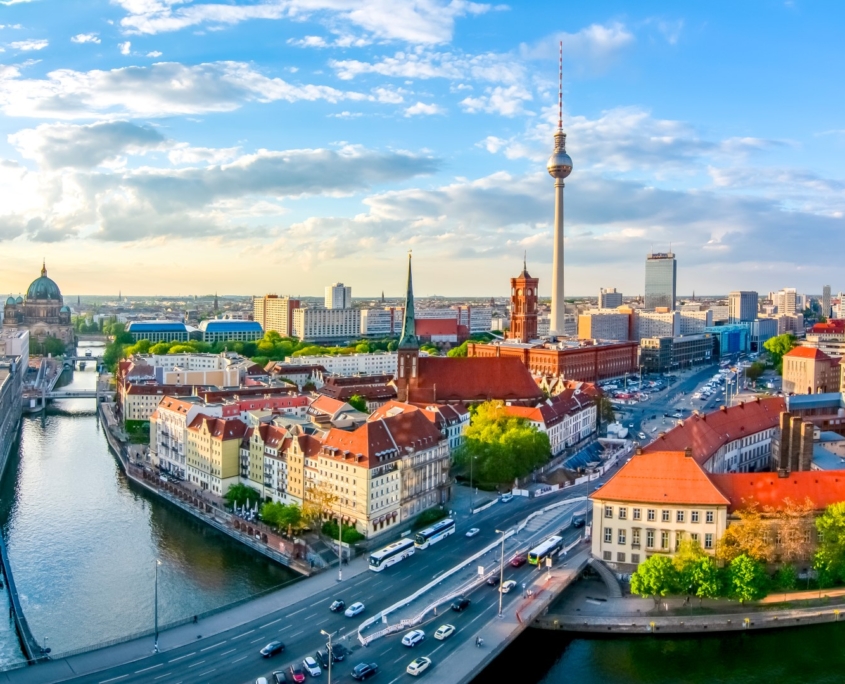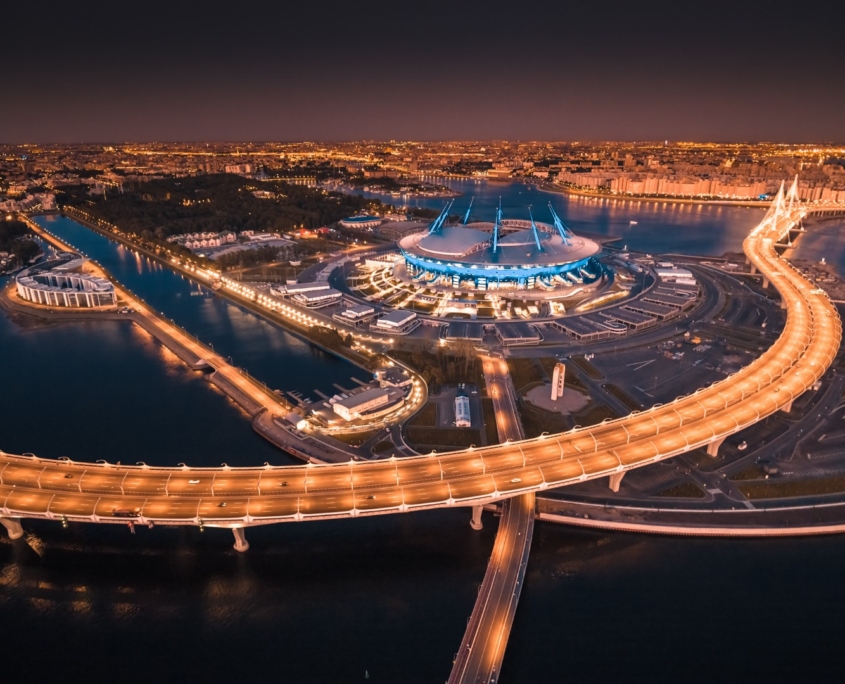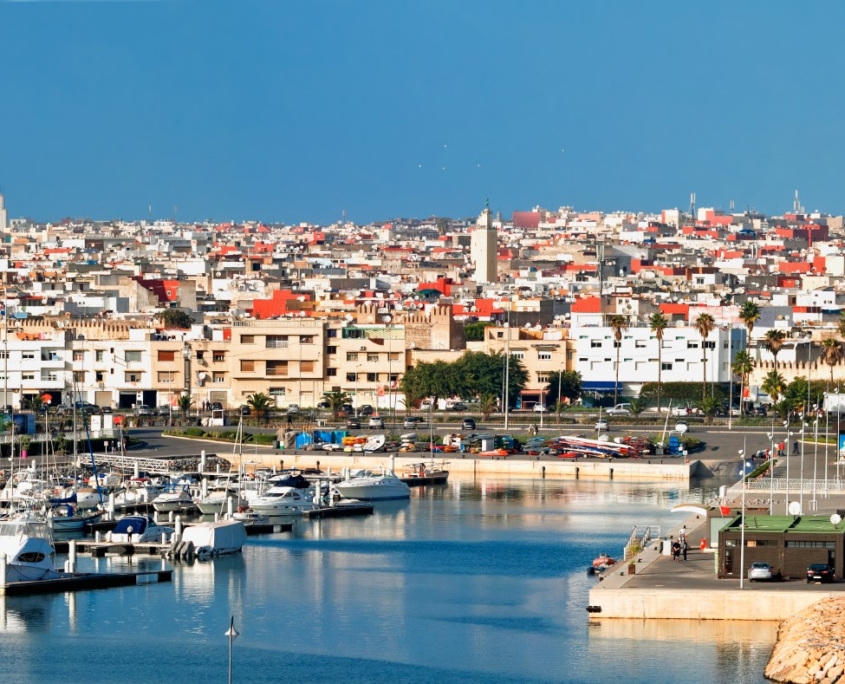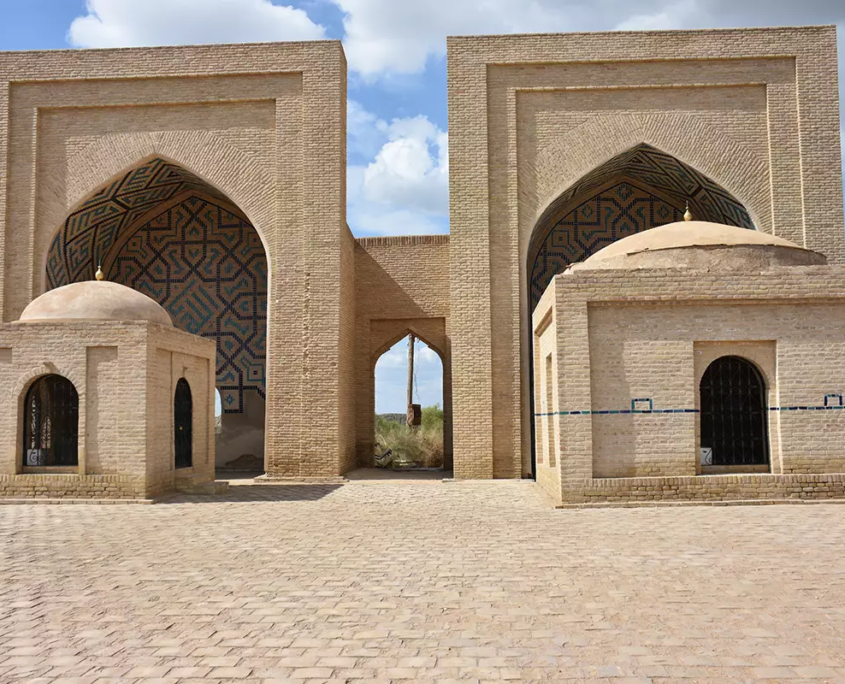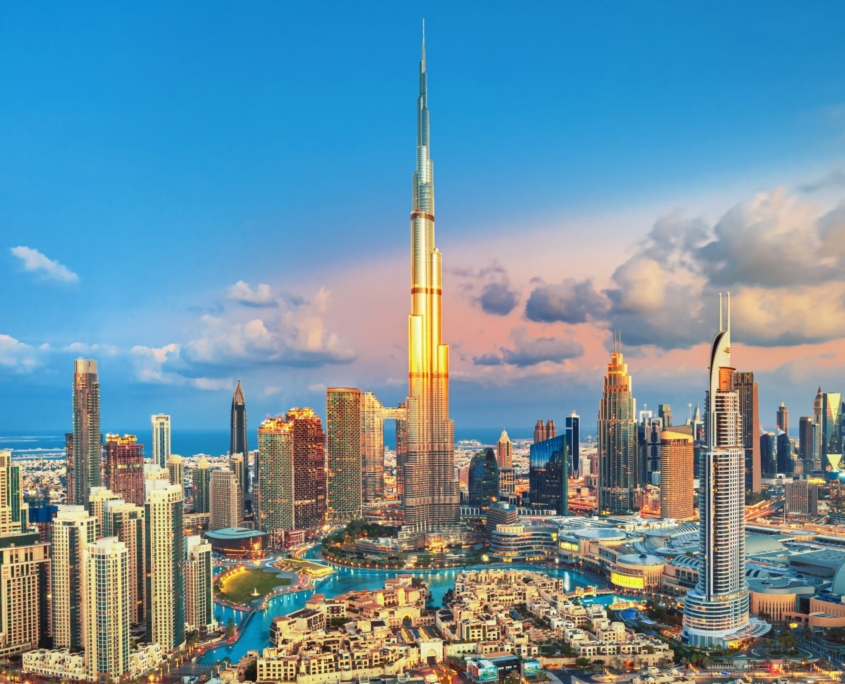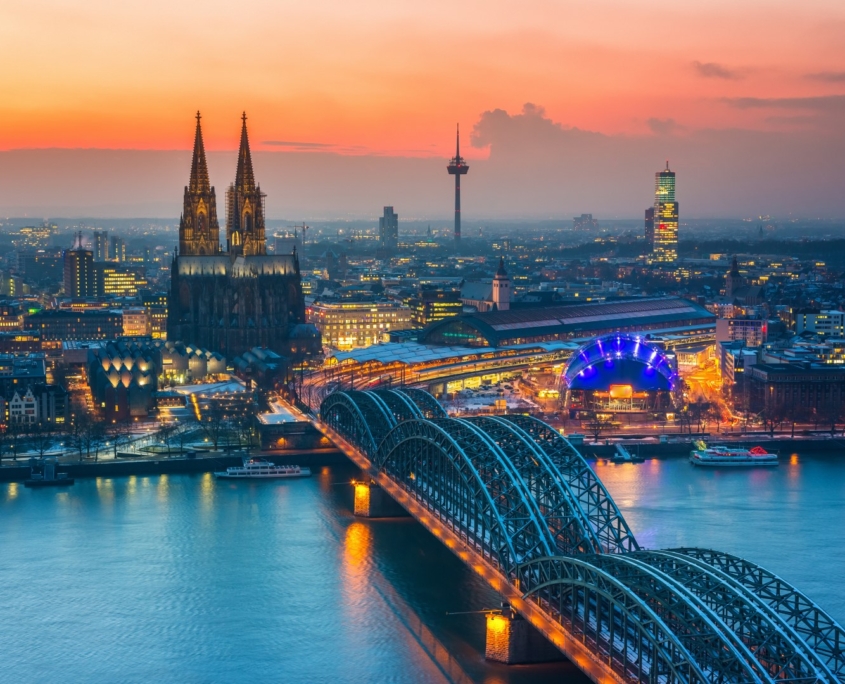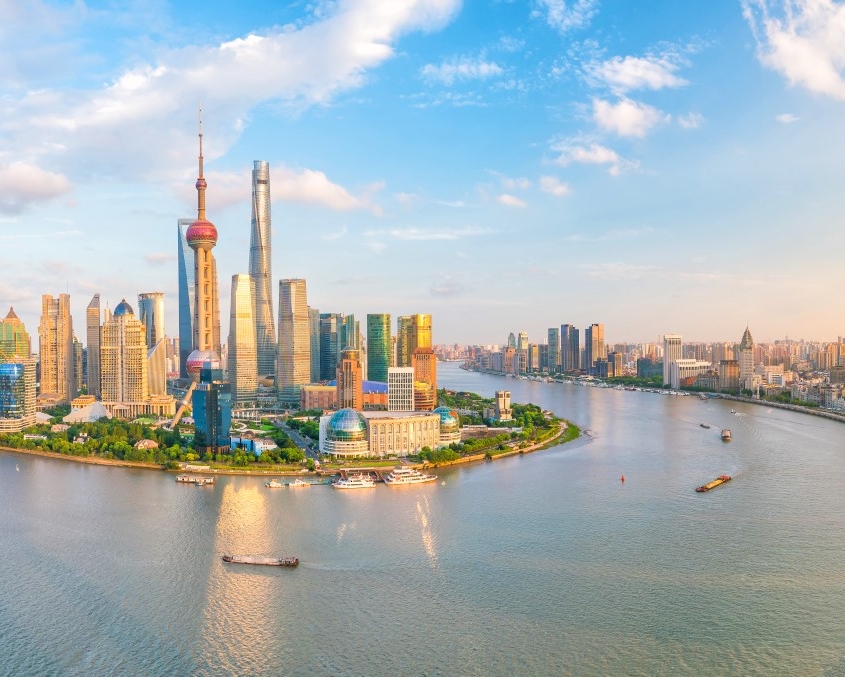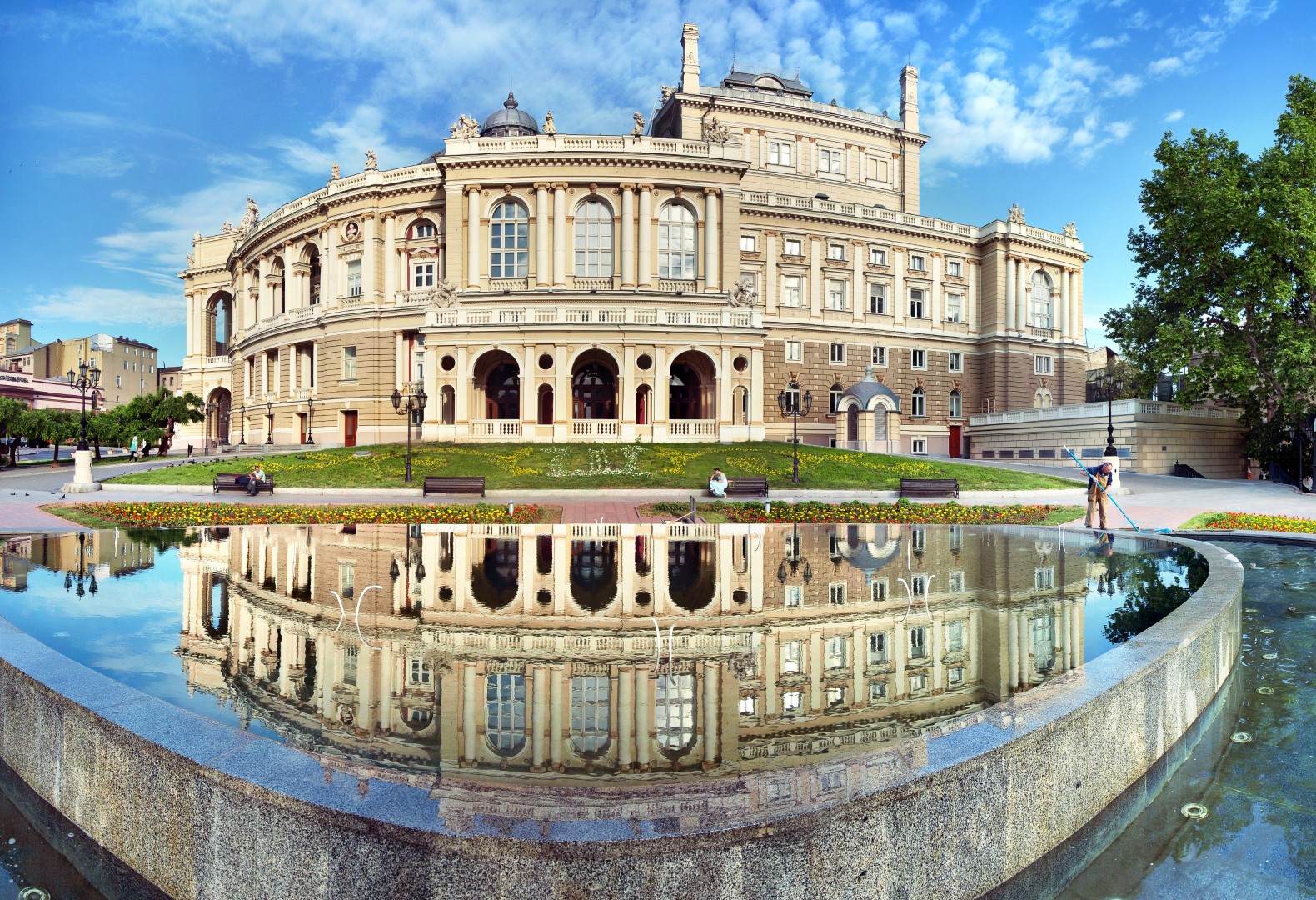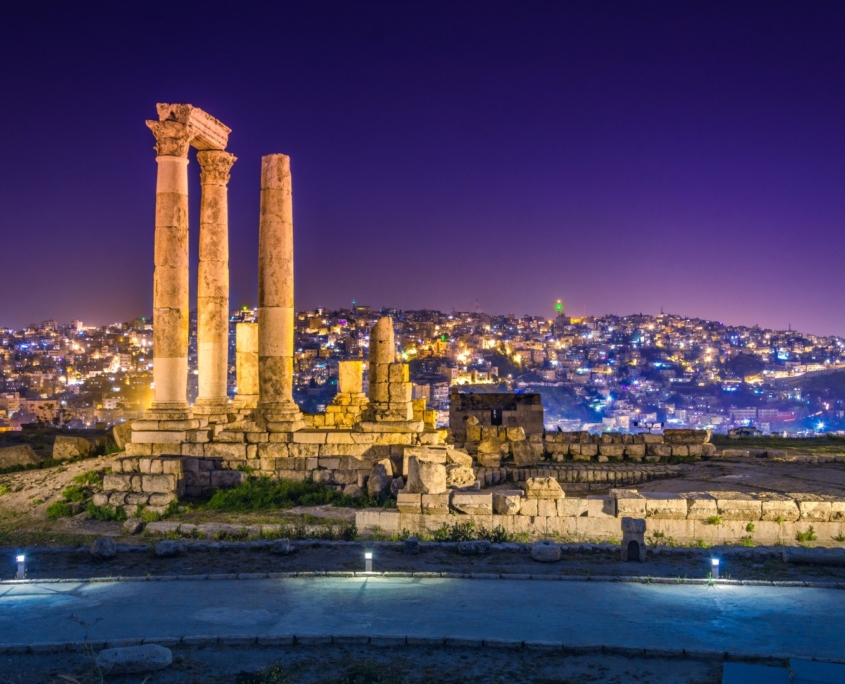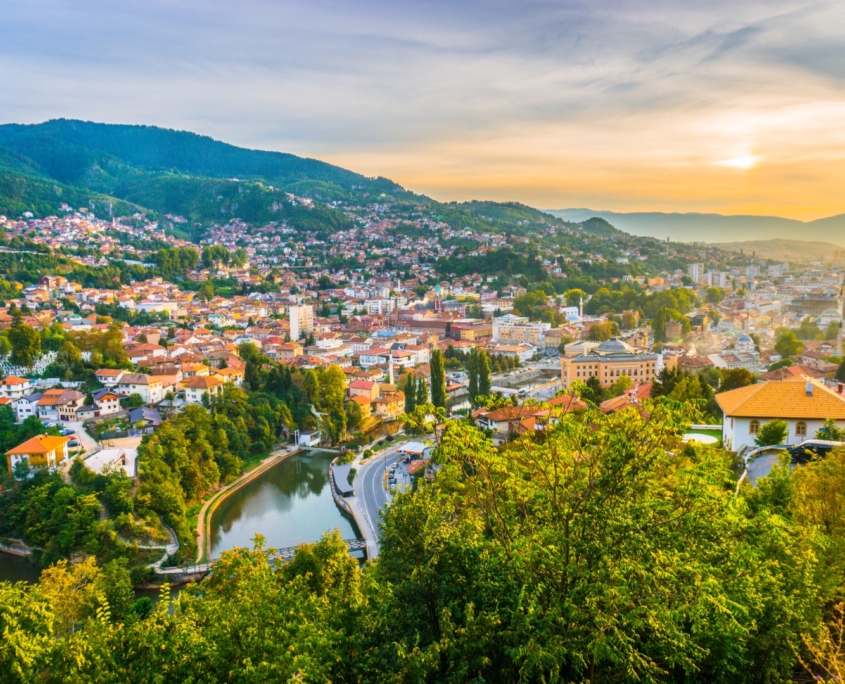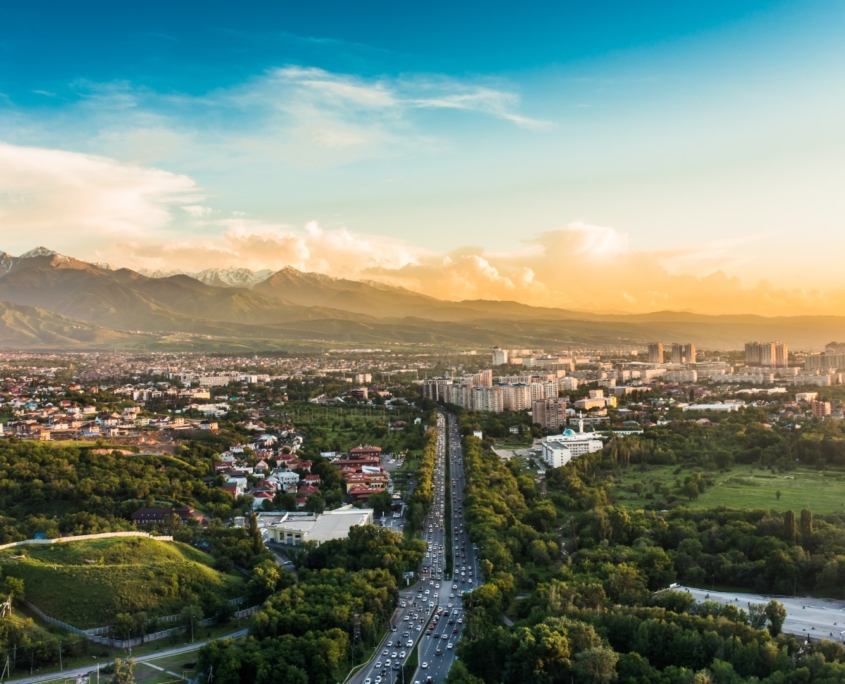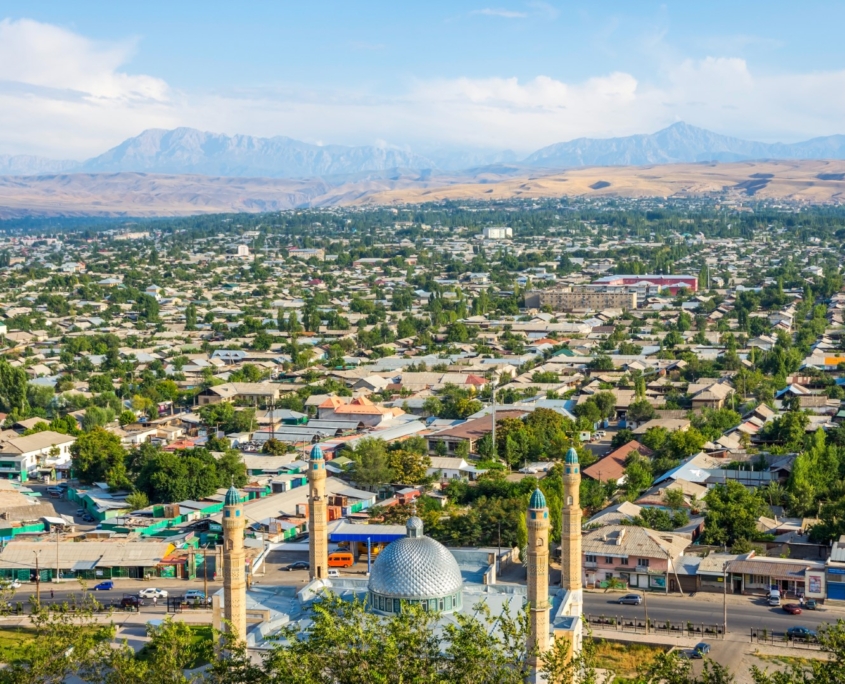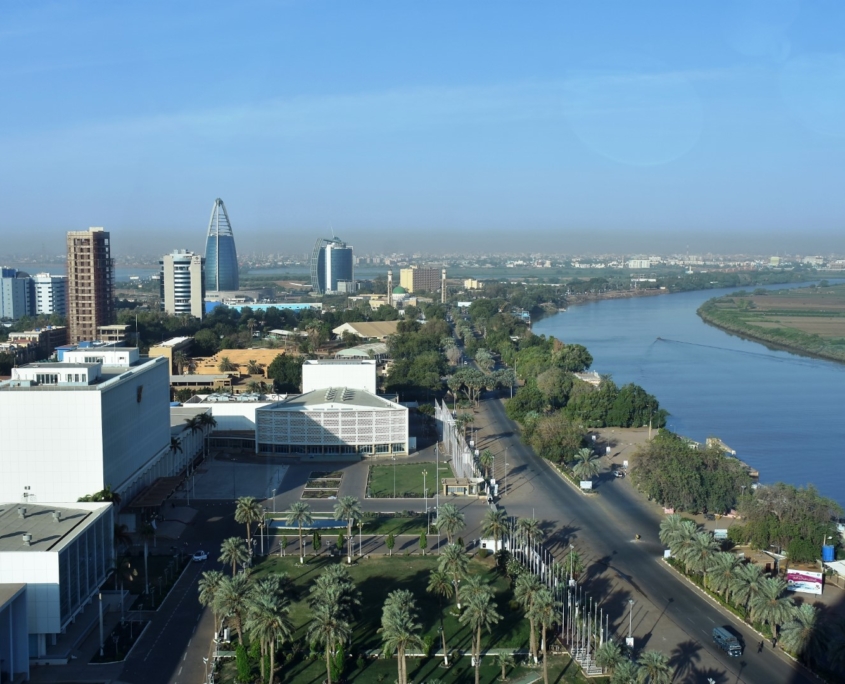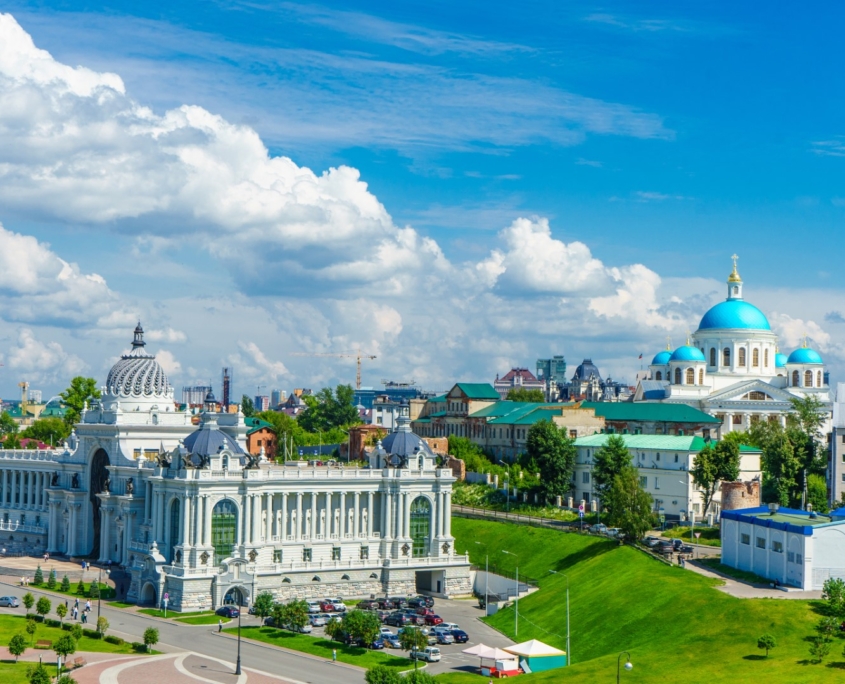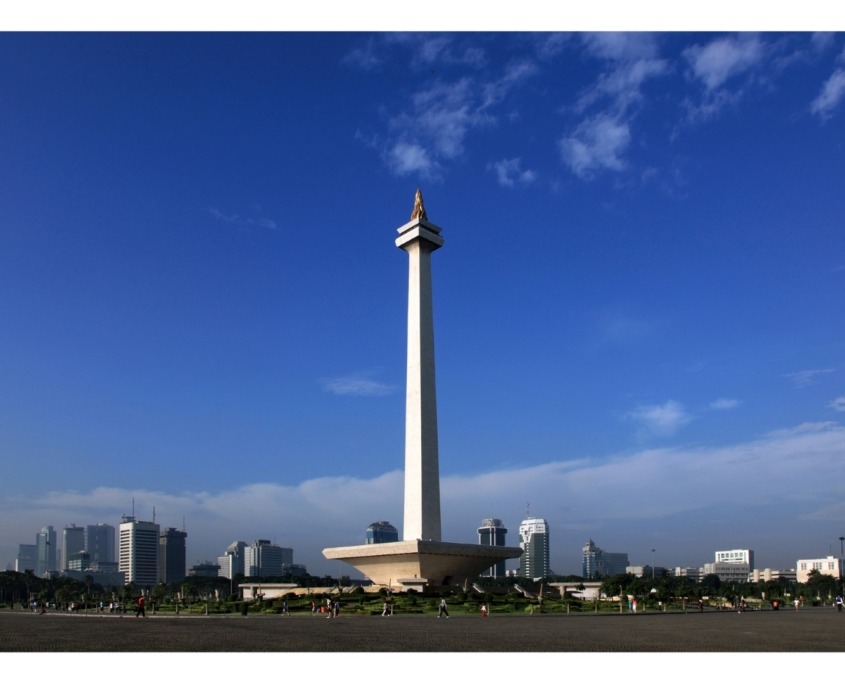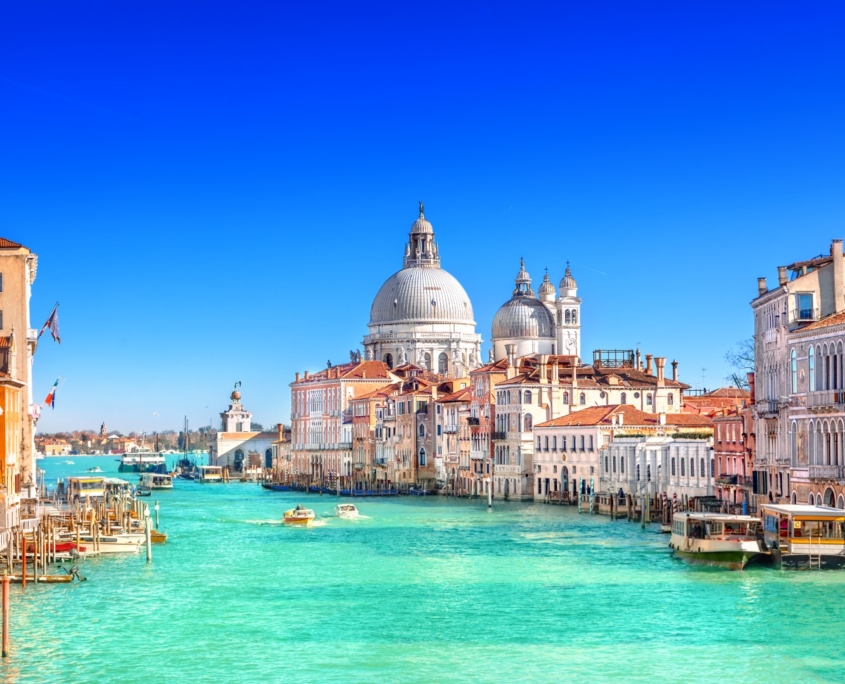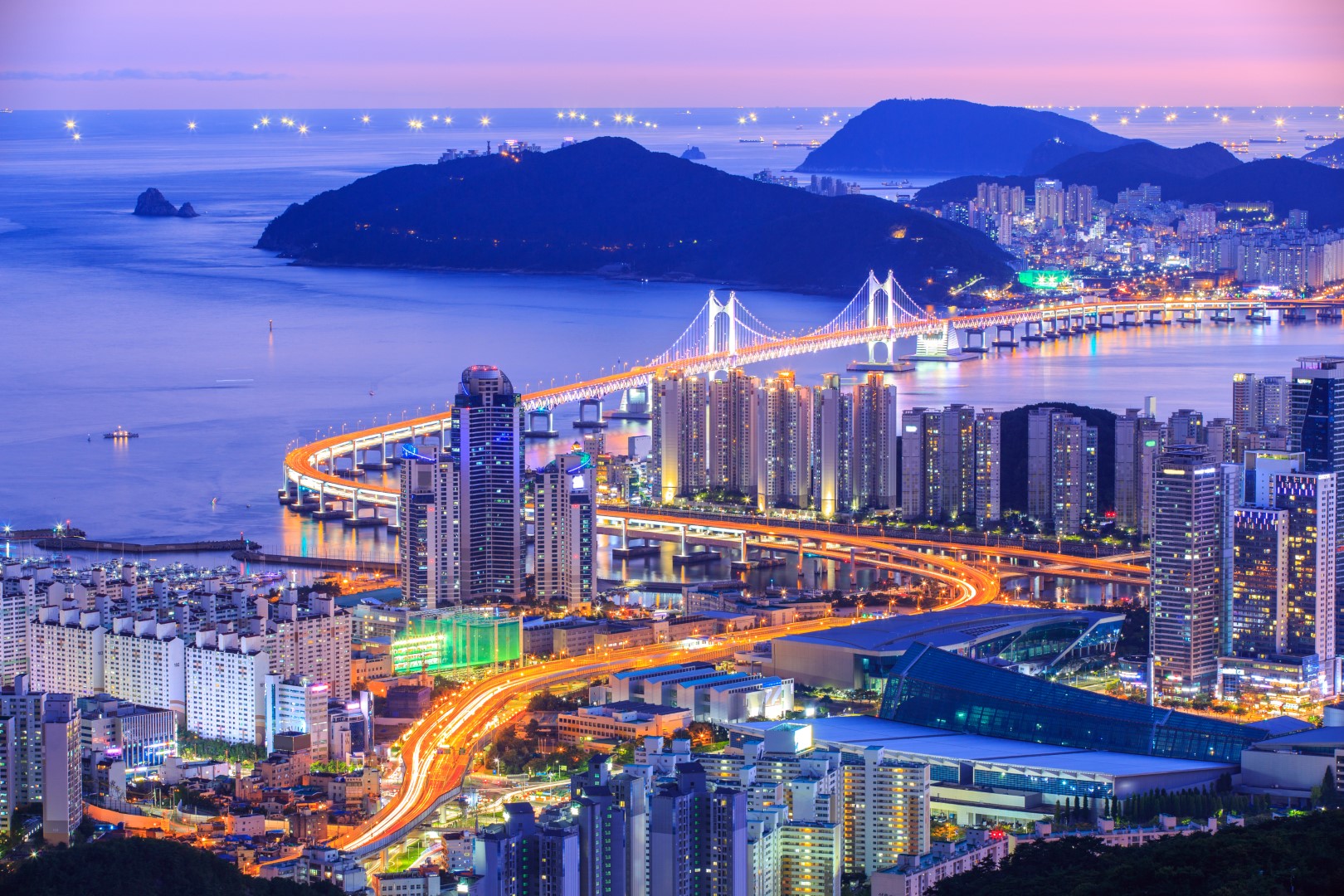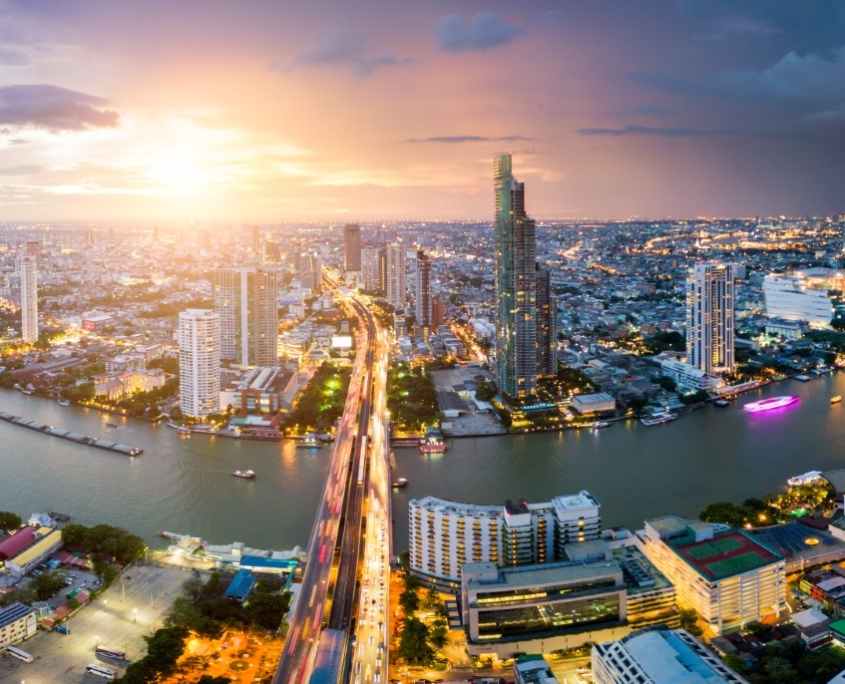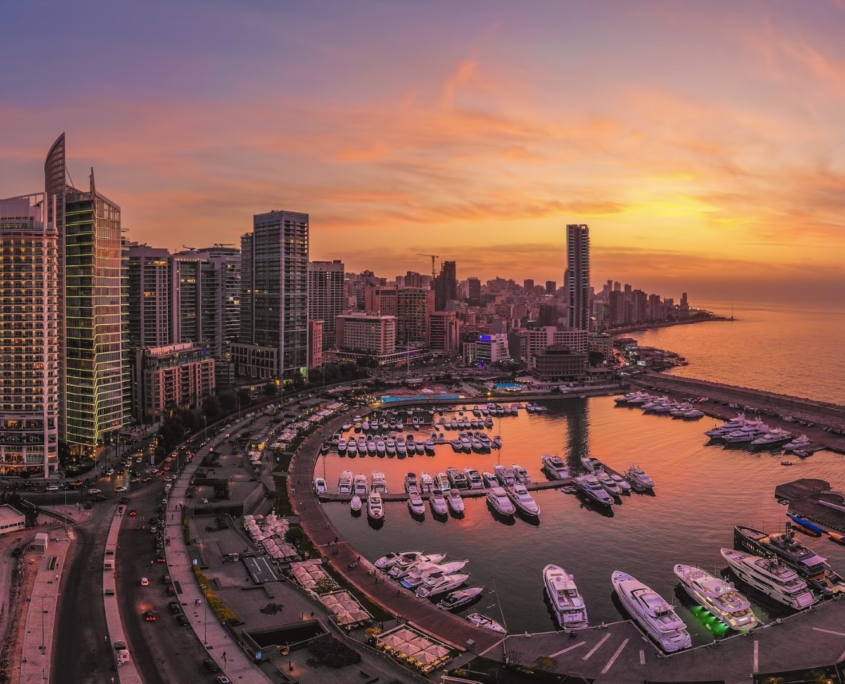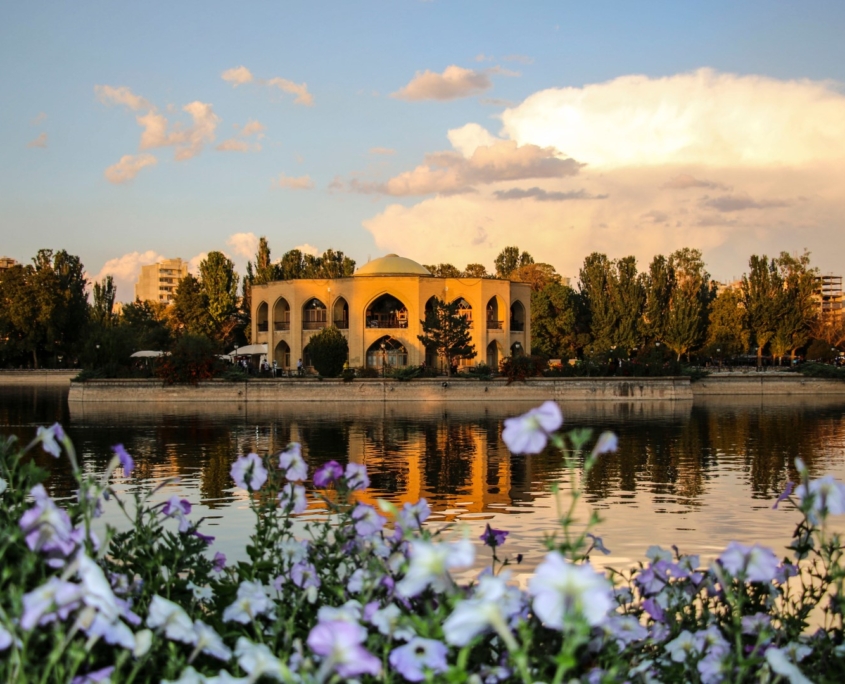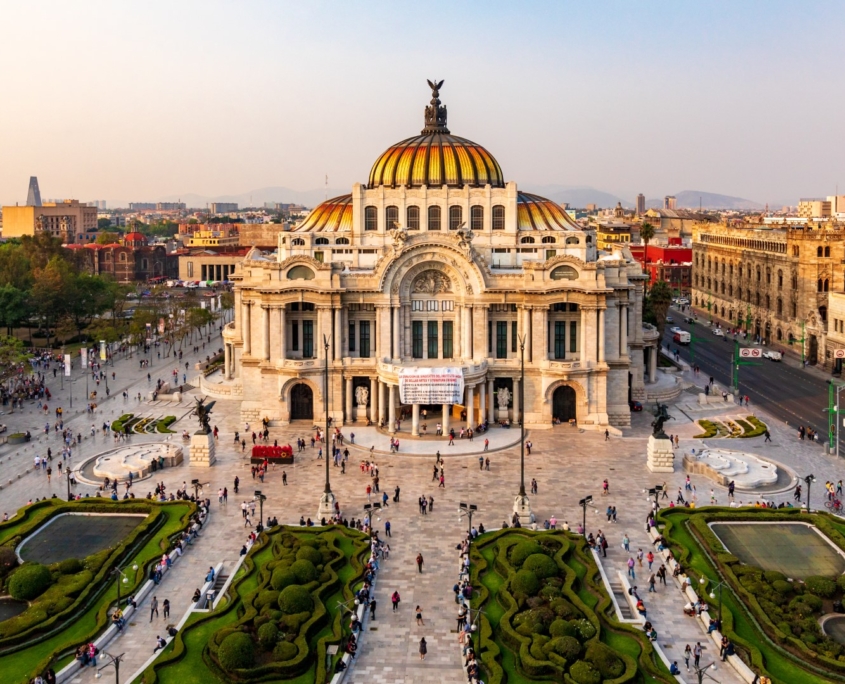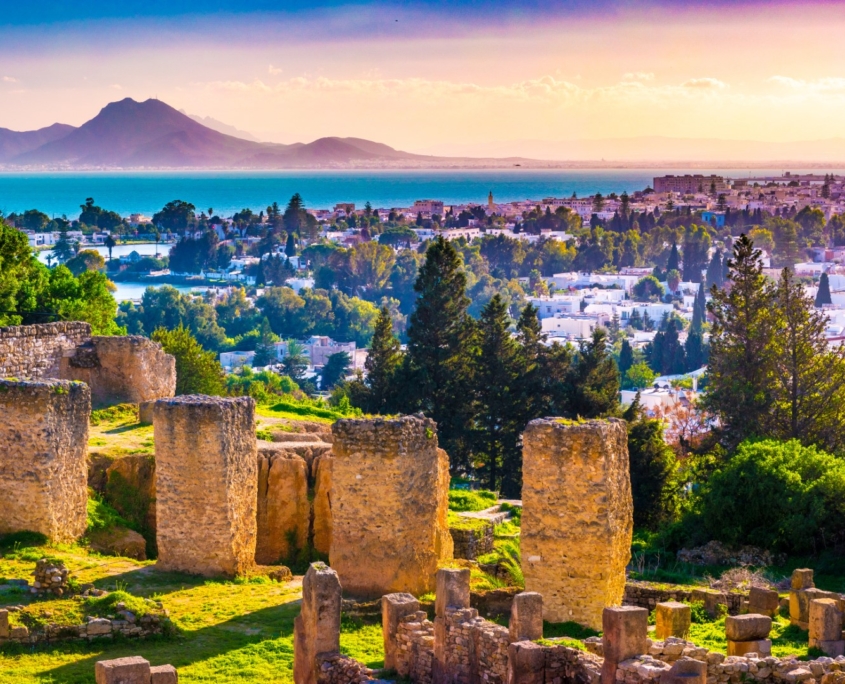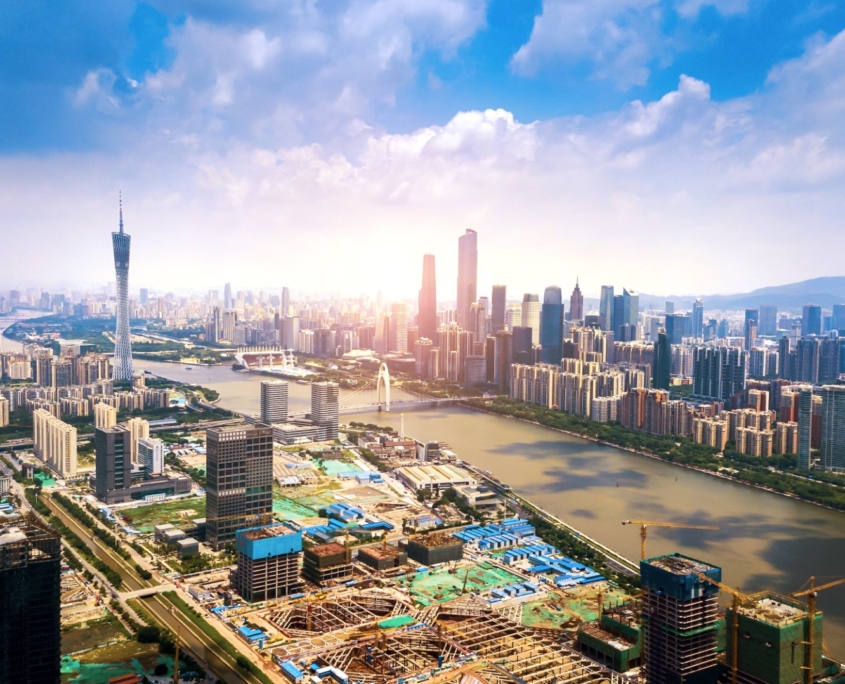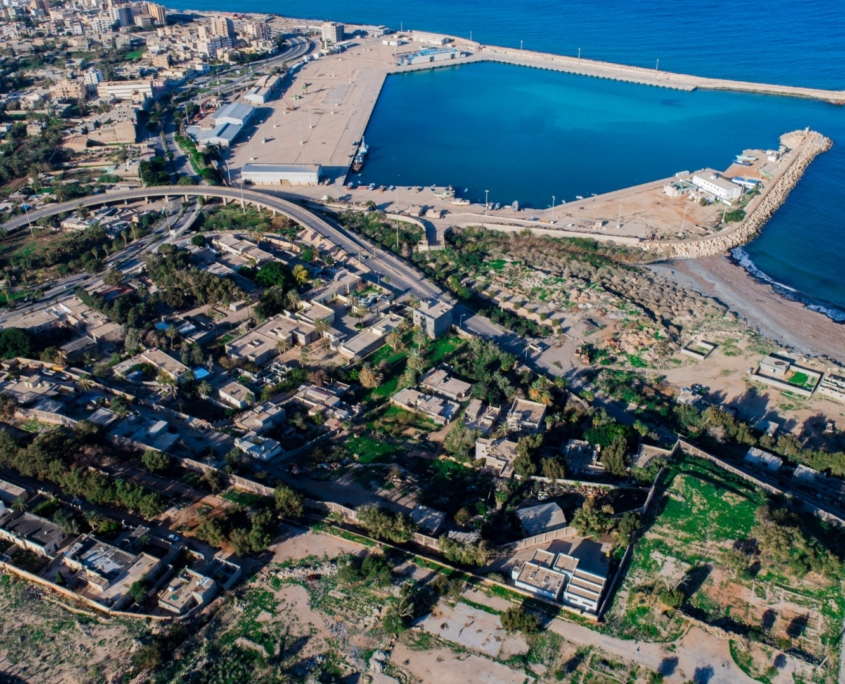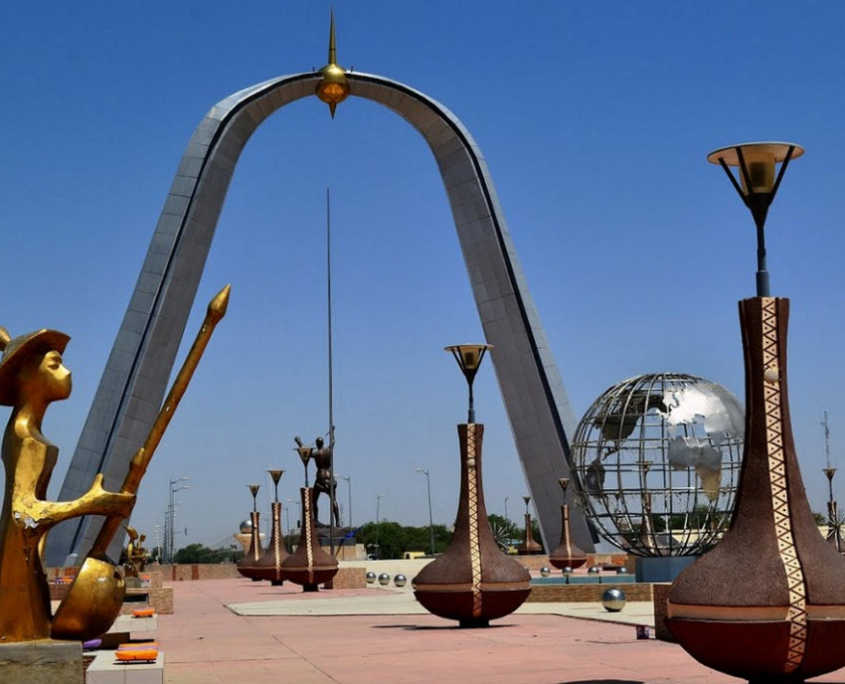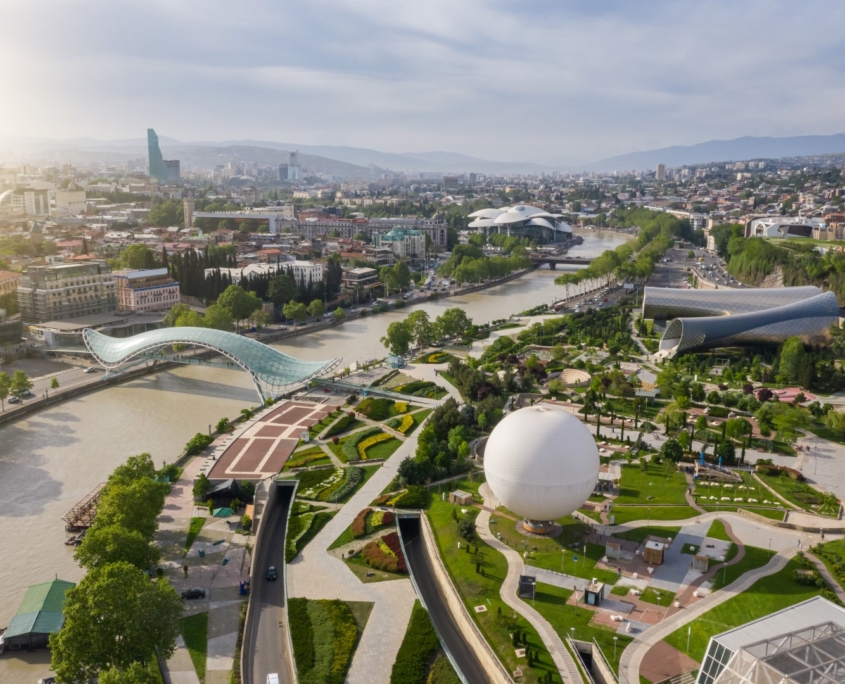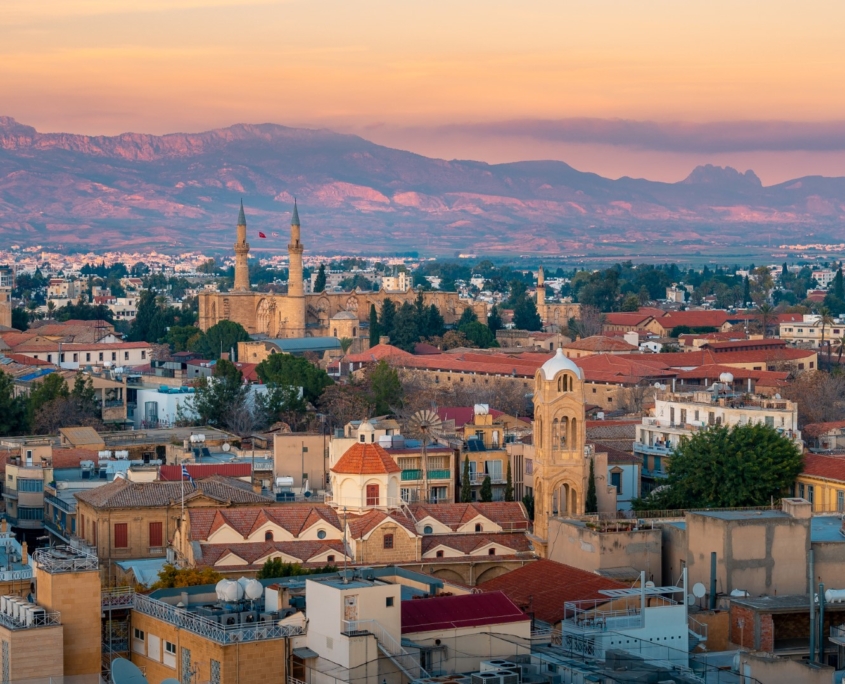Shimonoseki
Shimonoseki, the capital and largest city of the Yamaguchi region at the southwestern tip of Honshu, the main island that makes up Japan, has a population of approximately 270.000. Separated from Kyushu, Japan’s third largest island, by a strait named after the city, Shimoneseki also has a strategic importance. Shimoneseki, which stands out as an important center for fishing, agriculture and shipbuilding, stands out especially with its seafood. In this sense, the city’s most famous seafood is puffer fish. Shimonoseki, which became a sister city with Istanbul on May 16, 1972, holds the title of being the first sister city of Istanbul. The Japanese Garden located in Baltalimanı was established in November of the same year, in cooperation with Istanbul and Shimonoseki, on the occasion of the ‘2003 Turkey Year in Japan’ celebrations.
Lahore
Lahore, the administrative center of the Punjab province in the northeast of Pakistan, is the second largest city in Pakistan after Karachi and has a population of approximately 14 million as of 2023. Lahore, established in an agricultural region, is an important weaving city. The city is also an important cultural and tourism center of Pakistan with its rich history dating back a thousand years. Lahore Castle, Badshahi Mosque and Begum Shah Mosque, among the works left to the city by the Mughal Empire, are buildings protected by UNESCO. The sister city protocol between Lahore and Istanbul, which stands out with its identity as an economic, political, transportation, entertainment and education center, was established in 1975, and a Cooperation Protocol was signed between the two cities on October 6, 2011. Within the framework of the protocol signed between the IMM and Lahore city administration, technical consultancy services for the Transportation and Solid Waste project were provided to the city, and in this context, approximately 100 buses were donated to the people of the sister city.
Johor Bahru
Johor Bahru, the capital of the Malaysian state of Johor, is located at a strategic point that provides one of the two land border connections between Singapore and Malaysia to the south of the Malaysian Peninsula. The city, which is considered one of the country’s main gateways to the outside world, also hosts an international airport and a busy port. Johor Bahru, including the settlements around it, has a population of approximately 1.8 million and is the second largest metropolis in Malaysia. Johor Bahru is considered the fastest growing city in Malaysia after Kuala Lumpur, with its tourism, trade and transportation potential as well as its developing industry. Sister city relations were established between Johor Bahru and Istanbul in 1983.
Jeddah
Jeddah, Saudi Arabia’s second largest city after the capital Riyadh, is considered the commercial capital of the country. The largest port city of the country and the Red Sea, it is also the banking center of Saudi Arabia. The city has received many immigrants from other countries in the last 50 years with the effect of oil production. Jeddah, which also has a touristic city identity, is the first point where pilgrims from abroad set foot in Saudi Arabia before travelling to the Holy Land. Jeddah is also considered as the most cosmopolitan and liberal city of the country since it is a city where people from different cultures and religions meet compared to other cities of Saudi Arabia. Istanbul and Jeddah, which have many common characteristics such as their geographical location on the seashore, their commercial position in their country and their region, their cosmopolitan structure and migration, signed a Sister City agreement in 1984.
Cairo
Cairo, the capital of Egypt and the largest city in the Arab world and Africa, is also one of the oldest cities in the world, reflecting a combination of East and West, old and new. The city’s population is estimated to be around 22 million by 2023, representing around 20 per cent of Egypt’s population. Cairo is the political, economic and cultural center of Egypt and its neighboring countries and is considered one of the arteries of not only the country but also the region with its many universities, colleges, theatres, museums and monuments. The city, where the Pyramid of Giza, considered one of the seven wonders of the ancient world, is located and the Nile River passes through its center, is one of the most visited spots in the world. The sister city protocol between Istanbul and Cairo was concluded in 1988 and renewed in 2011.
Houston
Houston, the largest city in the US state of Texas, is one of the centers of many important industries such as energy, aerospace, maritime, healthcare, biotechnology and petrochemicals. The city is also known for being home to the Johnson Space Center, where NASA trains its astronauts and controls space missions. In addition, Houston has a rich arts and cultural life with a variety of cultural events, art galleries, museums, theatres and restaurants. The city is an active sports city with professional sports teams such as the Houston Rockets (NBA), Houston Texans (NFL) and Houston Astros (MLB), and is home to the world’s largest livestock show, the annual RodeoHouston.
Berlin
The largest city, the capital and a state of the Federal Republic of Germany, Berlin has a population of around 3.5 million. The city, which was first divided into four parts after World War II, was divided into two in 1961 by the Berlin Wall, also known as the ‘Wall of Shame’, and this wall, which was considered a symbol of the Cold War, was demolished in 1989 and this event became a symbol of the reunification of Germany. On October 3, 1990, after the official reunification of the two Germanies, Berlin became the capital of Germany. Today, the city has become a global center of science and culture and is an important tourist destination due to its historical texture. Berlin is one of the most densely populated cities in Europe, in terms of people from Turkish origins. The Kreuzberg neighborhood, where mainly Turks reside, is also known as ‘Little Istanbul’. Berlin and Istanbul established a Sister City relation on November 17, 1989 and signed a Memorandum of Understanding on May 26, 2005.
St. Petersburg
Spread on islands on the Neva River on the Baltic Sea coast, St. Petersburg is Russia’s second largest city after the capital Moscow with a population of 6 million. Founded by Tsar Peter I in 1703 as the gateway of the Russian Tsardom to Europe, the city served as the capital of the Russian Tsardom for more than 200 years until the October 1917 revolution. The city was renamed Leningrad during the Soviet Union. Its wide boulevards, bridges and examples of tsarist architecture have earned it the nickname Venice of the North. The Hermitage Museum in the city houses the vast art collections of the tsars and is one of the largest museums in the world. With its historical buildings and sculptures, St. Petersburg is on the UNESCO World Heritage List. In addition, the world-famous writer Dostoevsky’s novels Crime and Punishment, The Idiot, The Humiliated and Insulted, and White Nights are set in this city. A sister city protocol was signed between Istanbul and St. Petersburg on November 22, 1990.
Rabat
The metropolitan area population of Rabat, which is also the capital of the country located on the northwest coast of Morocco, is around 2 million as of 2023. Located on the Atlantic coast, the city is considered to be the European face of the country with the highest living standards and a thriving economy. Rabat is not only an administrative center but also an educational and cultural tourism focal point with its historical texture. The historical part of the city, which is a synthesis of French colonial architecture and Islamic architecture, is included in the UNESCO World Heritage List. The sister city protocol between Istanbul and Rabat was signed in 1991. On November 23, 2011, a Memorandum of Understanding was signed between the two cities based on the aforementioned protocol.
Merv
Merv, an oasis city in the southeast of Turkmenistan, about 400 kilometers from the capital Ashgabat, on the historic Silk Road, has been home to various settlements since the Stone Age. For a long time, it was a political, economic and scientific center to the extent that it was described as the “Kaaba of Khorasan” and “the mother of all cities in Khorasan”. In 1884, a modern city was established next to the historical city as the military and administrative center of Russia. Merv became a cotton production center during the Soviet Union. In 1968, a large natural gas reserve was discovered 20 km west of the city. The historical part of Merv was turned into an archaeological park by Turkmenistan in 1987 and was listed as a UNESCO World Heritage Site in 1999. A sister city protocol was signed between Istanbul and Merv on June 21, 1994.
Barcelona
The second largest city in Spain after Madrid, Barcelona is the center of the Catalonia Autonomous Community in the northeast of the country. One of the most important cities in the Mediterranean basin and home to an important commercial port, the city has become a major tourist destination, especially after the 1992 Summer Olympics. The city is characterized by its distinctive culture, its modern grid-planned city plan and the works of the famous architect Gaudi, especially the Sagrada Familia Cathedral. Barcelona is also an important industrial and financial center, offering a standard of living above the national average. The city is also home to the UCLG (United Cities and Local Governments) and Metropolis city networks, of which IMM is a member. A sister city relationship was established between Barcelona and Istanbul on January 5, 1997.
Dubai
Located in the northeast of the country, Dubai is the second largest of the seven emirates that make up the United Arab Emirates, after Abu Dhabi. The city, which has a harsh climate that reaches over 40 degrees Celsius in summer and a maximum of 14 degrees Celsius in winter, started to develop with the extraction of oil and natural gas in the region since the 1960s, but later diversified its economy and started to stand out as a trade, transportation and tourism center. Dubai, home to the world’s first 7-star hotel, is not only the center of duty-free trade in the region, but also reinforces this title with events such as the Dubai Trade Festival, which has been held since 1996. Dubai, home to one of the world’s largest airports and the world’s tallest building standing at 828 meters, signed a sister city protocol with Istanbul on January 5, 1997.
Cologne
Cologne, the 4th largest city of Germany after Berlin, Hamburg and Munich, is located near the borders with Belgium and Netherlands, in the state of North-Rhine Westphalia. The city, divided in two by the famous Rhine River, is famous for its deep-rooted history, unique architecture and especially the UNESCO World Heritage Site Cologne Cathedral, which took more than 600 years to build. The city is the most important transport, cultural, scientific, artistic, commercial and entertainment center of its state. It is also the intersection point of the railway and air transport networks. Cologne, which has a cosmopolitan population structure, is one of the cities with the highest Turkish population living in Germany. A sister city relationship was established between Cologne and IMM on 15 March 1997 and the 25th anniversary of the establishment of these relations was celebrated in 2022.
Shanghai
Shanghai, the symbol city of the recent economic development of the People’s Republic of China, is the largest city in the country with a population of more than 26 million. Located on the eastern coast of the country, in the easternmost part of the Yangtze River Delta, the city’s name means “above the sea” in Chinese. The city has consolidated its place as the country’s economic, financial, trade and transport center with its cosmopolitan and multicultural structure, which has become more diverse especially in the recent years. In this context, the city is home to the world’s busiest container port and Asia’s second largest stock exchange in terms of market capitalization after Tokyo. Shanghai and Istanbul signed a Sister City Agreement on 23 October 1989 and a Memorandum of Understanding on 27 October 1997.
Odessa
Located on the Black Sea coast in southwest Ukraine, Odessa is the second largest city in the Black Sea basin after Samsun. The city, with its historical importance, is the administrative center of Odessa Oblast and an important tourism, port and transportation center. Odessa is the third most populous city in the country after the capital Kiev and Kharkov. The city is also an important scientific and cultural center of the country with its university and astronomical and geophysical observatories. There are some buildings, albeit very few, remaining from the Turks in Odessa, where there are still a small number of local Turks and Tatar Turks. The historical center of the city was listed as a World Heritage Site in 2023 at an extraordinary meeting of the UNESCO World Heritage Committee. The Heritage Site was also added to the List of World Heritage in Danger in the same year. A sister city agreement was signed between Istanbul and Odessa on 2 November 1997.
Amman
The capital and largest city of the Hashemite Kingdom of Jordan, Amman is also the political, cultural and commercial center of the country. The city dates back to 7000 BC, making it one of the oldest settlements in the region and the world. Among the many historical buildings and ruins that can be seen in the city are the Amman Citadel and the Roman amphitheater. Amman is located 35 km northeast of the Dead Sea, 110 km east of the Mediterranean Sea and 65 km east of Jerusalem. The eastern part of the city, where the mayor is appointed by the king, looks like a traditional Middle Eastern city, while the western part is greener and more modern. A sister city agreement was signed on November 28, 1997 with Amman, which has many similar characteristics to Istanbul in terms of its history, geographical features and importance within the country.
Sarajevo
Sarajevo, the largest city and capital of Bosnia and Herzegovina, is located in the southeast of the country. The city, which is also called the “Jerusalem of Europe” due to its multi-identity structure, is the most important city of the country in every aspect. Its multi-ethnic structure has also made it one of the most important cultural cities of the Balkans. The city, which has deep Turkish traces and influence due to four centuries of Ottoman rule, hosted the Winter Olympics in 1984. Sarajevo, which suffered significant damage during the Bosnian civil war, is undergoing a process of renewal and recovery after the war. The annual Sarajevo Film Festival is considered one of the most important cultural events in the region. A Sister City Relationship was established between Sarajevo and Istanbul on December 25, 1997. Sarajevo is also one of the Founding Members of the B40 Balkan Cities Network, which was established in November 2021 under the leadership of Istanbul Metropolitan Municipality.
Durrës
Durrës, Albania’s second largest city after the capital Tirana, is a coastal and tourist city located on the shores of the Adriatic Sea, approximately 30 kilometers from Tirana. One of the oldest settlements in the country, Durrës dates back to the 7th century BC and has been home to many civilizations from Ancient Greece to Rome and the Ottoman Empire. An important port city for maritime trade in the Adriatic and Mediterranean, Durrës is the country’s gateway to Europe via Italian ports. A sister city relationship was established between Durrës and Istanbul on February 6, 1998. Durrës is also one of the Founding Members of the B40 Balkan Cities Network, which was established in November 2021 under the leadership of Istanbul Metropolitan Municipality.
Almaty
Almaty, formerly Alma-ata, is the largest city and former capital of Kazakhstan with a population of over 2 million. It is located in the south-east of Kazakhstan, close to the border with Kyrgyzstan. The city was founded in 1854 as a Russian border fortress in the east. Today, Almaty is considered to be the most developed city in the Central Asian region and has undergone rapid development and change since Kazakhstan gained independence from the Soviet Union. Despite being the former capital, it is still the cultural, economic and commercial center of the country. Almaty, which has many traces of Central Asian culture and Russian architecture, was selected by UNESCO as part of the Creative Cities Network in 2017. The Abai Kazakh State Opera and Ballet Theater, built in the 1930s, and the Kasteyev State Art Museum showcase the city’s artistic and cultural richness. A sister city protocol was signed between Istanbul and Almaty on April 2, 1998 and the protocol was renewed on October 15, 2002.
Osh
Located in the south of the historically and strategically important Fergana Valley, Osh, also called the “capital of the south”, is the second largest city in Kyrgyzstan after the capital Bishkek. Osh is one of the oldest settlements in the region with a history of approximately 3000 years and is a city where Kyrgyz, Uzbeks, Russians and Tajiks live together with a population of more than 250 thousand and is generally known as the market city of Central Asia. Osh is also known as the center of silk production along the Silk Road, especially in the 8th century. The city, which is considered important both in terms of Turkish history and Islamic religion, is surrounded by Sulayman Mountain and Tian Shan, which were included in the UNESCO World Heritage list in 2009. The city, which is also a member of the Union of Turkish World Municipalities (TDBB), was selected as the “2019 Cultural Capital of the Turkic World”. A sister city protocol was signed between Istanbul and Osh on September 20, 1997 and the protocol was renewed on August 1, 1998.
Plovdiv
Plovdiv is the second largest city in the neighbor country Bulgaria after Sofia and is located in the central southern part of Bulgaria. Named after Philip II, the father of Alexander the Great, the city has thousands of years of history and has been home to many different civilizations from Ancient Greece to the Ottoman Empire. Because of these characteristics, the city became the European Capital of Culture in 2019. Plovdiv is one of the most important economic, transportation, cultural and educational centers of the country and is home to a significant part of the Turkish population living in Bulgaria. On January 23, 2021, a sister city relationship was was established between Istanbul and Plovdiv, also known as the “City of 7 Hills” just like Istanbul. Plovdiv is also one of the Founding Members of the B40 Balkan Cities Network, which was established in November 2021 under the leadership of Istanbul Metropolitan Municipality.
Constanta
Constanta, the fourth largest city in Romania after Bucharest, Cluj and Iasi, is located in the Dobruja Region, in the southeast of the country, where the Danube River meets the Black Sea. The city, which hosts one of the largest ports of the country and one of the most important ports of the Black Sea, was founded by the Greeks in the 600s BC under the name “Tomis”. Constanta is also an important summer tourism destination with its history dating back thousands of years, its unique architecture, cosmopolitan cuisine influenced by various cultures, and beaches stretching for kilometers. A sister city relationship was established between the city, which still hosts a significant number of Turkish-Tatar population, and Istanbul on May 22, 2001. Constanta is also one of the Founding Members of the B40 Balkan Cities Network, which was established in November 2021 under the leadership of Istanbul Metropolitan Municipality.
Khartoum
The history of Khartoum, the capital of Sudan and the Khartoum State of the same name and the largest city with a population of 6 million, dates back to the early 19th century. The city was founded in 1821 by the Governor of Egypt İbrahim Pasha of Kavala as an outpost city and further became a regional trade center. Khartoum became the capital of the newly established state after Sudan gained independence from the United Kingdom in 1956. Founded at the intersection of the White and Blue Nile rivers, the city is in a position that can be considered the heart of Sudan and East Africa with its strategic location. The city has a developing structure with its administrative buildings, training centers, airports and rail systems. The sister city protocol between Istanbul and Khartoum was signed on 9 October 2001.
Kazan
The capital city of Tatarstan Autonomous Republic of the Russian Federation and a deeply historical city, Kazan is among the most prominent cities of Russia. Kazan is highly accessible thanks to its international airport and the port on Volga River, and is an important tourism, education and industrial center with its unique architecture, vast parks, ponds, advanced infrastructure and university. Founded over the ancient remnants of Kazan khans, the historical castle also known as Kazan Kremlin was declared a world heritage site by UNESCO in 2000 and is the most visited part of the city. With a 2-million population mostly made up of Muslim Tatars despite its cosmopolitan structure, Kazan signed a sister city protocol with Istanbul on 7 October 2002.
Skopje
Damascus
Damascus, the largest city and capital of Syria, originally known as Dımeşk, is located in the south of the country, close to the Lebanese border. Damascus, which is claimed to be the oldest uninterruptedly inhabited city, has archaeological settlement remains dating back to 4000 BC. The city came under Ottoman rule at the beginning of the 16th century and was the most important center of the Ottoman Empire in the region for 400 years. The world-famous Umayyad Mosque, along with the mausoleums of people who are considered important in Islam and other religions, are also located in Damascus, which is an important religious center, and throughout Syria. After World War I, Syria came under French rule and the city became the capital of the country after Syria gained its independence in 1946. The sister city agreement between Istanbul and Damascus was signed on 18 December 2006.
Jakarta
Jakarta, with a metropolitan population exceeding 30 million, is the largest city in Southeast Asia, and it is the capital of Indonesia and its largest city. The city, which is located on the island of Java, has become the capital of Indonesia after the country gained independence from the Netherlands after World War II. Jakarta, with its developing economy, is the economic, cultural and political heart of the country, where the world’s leading e-commerce and tech companies are located. The city is also a tourism center with its countless islands, nearby beaches and Jakarta History museum and it is home to the secretariat of the Association of Southeast Asian Nations (ASEAN). A sister city relationship was established between Jakarta and Istanbul through the signing of a preliminary protocol on 30 October 1998 and a Memorandum of Understanding on 13 April 2007.
Venice
Venice, located in the Veneto region in the north-east of Italy, is known as one of the most historical and touristic cities of Italy. Venice, a city built on islands in the center of a lagoon with the same name as the city, between the deltas of the rivers Po and Piave, is famous for its canals, architecture (especially bridges) and festivals. The city is included in the UNESCO World Cultural Heritage List. Venice has been one of the most important centers of the Mediterranean basin and Europe, especially during the Middle Ages and Renaissance, due to its strong navy and its vibrant art and trade center. The famous buildings in the city such as the Grand Canal, Piazza San Marco, the Turkish Inn, the Ducal Palace and the Rialto Bridge are worth seeing. A sister city relationship was established between Venice and Istanbul on 8 June 2007.
Busan
Busan, a coastal city located on the southeastern tip of the Korean peninsula, is the country’s most populous city after the capital Seoul with a population of over 3.5 million. Considered the economic, cultural and educational center of its region, Busan’s port is the largest in South Korea and the sixth largest in the world. The Southeast Marine Industrial Zone, where the city is located, is the largest industrial zone in South Korea, a country of technology and industry. Korea’s longest river Nakdong flows into the sea through this city and the country’s largest beach Haeundae is also located in Busan. A Preliminary Protocol for the establishment of a Sister City relationship between Istanbul and Busan was signed on June 04, 2002 and a Memorandum of Understanding for the implementation of this protocol was signed on June 13, 2008.
Bangkok
Bangkok, the most populous city and capital of the Southeast Asian country of Thailand, is one of the fastest growing and most economically dynamic cities in the region. Considered as one of the most cosmopolitan cities in Asia, tourism plays an important role in the city’s economy. Bangkok is one of the most visited cities in the world, especially the Buddhist Temples, the National Museum and the Royal Palace attract millions of tourists every year. Located in the tropical climate zone, the city has been defined as the hottest major city in the world by the World Meteorological Organization (WMO). On the other hand, the city has an important place in the country’s automotive industry. The headquarters of the Petroleum Corporation of Thailand (PTT), one of the world’s largest companies, is also located in Bangkok. A sister city relationship was established between Bangkok and Istanbul on July 6, 2009.
Beirut
Beirut, the capital and largest city of Lebanon, which was under Ottoman rule for four centuries, has historically been one of the most important economic, intellectual and cultural centers of the Middle East. Beirut, which is the most cosmopolitan city in the region due to the different ethnic and religious groups it hosts, has been heavily wounded during the Lebanese Civil War (1975-1991) as a result of the social and political turmoil that started after the 1970s, but has been in an effort to rebuild after the war. Located in one of the most beautiful spots in the Mediterranean, Beirut is a city that stands out in terms of gastronomy as well as its rich history, cosmopolitan structure and natural beauties. The National Museum, Al-Omari Mosque, the Hamra district in the center and Harissa Hill are worth visiting. A sister city agreement was signed between Istanbul and Beirut on October 29, 2010.
Tabriz
Tabriz, one of the most important cities of Iran with a population of over three million, is located in the northwest of the country, just near the Turkish border. Tabriz is also the administrative center of the East Azerbaijan Province. The city, where the majority of the population consists of Iranian Azerbaijanis, is the second most important city of Iran in terms of industry after the capital Tehran. Tabriz, which is regarded as the western gate of Iran due to its location, is considered to have a history of five thousand years. During this time, the city has naturally hosted many civilizations. A Memorandum of Understanding was signed between Tabriz, which has many places to see such as Tabriz Grand Bazaar, Grand Mosque, Constitutional Monarchy Museum, Poets Monument, El Lake Park, and Istanbul on September 16, 2010, and the Sister City relationship was established on October 29, 2010.
Mexico City
Mexico City is the capital and largest city of Mexico, the most important country in Central America. It is also one of the most populous and important metropolises in the Latin world and is known for its rich history, cultural diversity, vibrant art scene and dynamic atmosphere. The city was founded on the Aztec capital known as Tenochtitlan, and this part of the city is a UNESCO World Heritage Site with its historic buildings and monuments reflecting Aztec and Spanish influence. The city is also rich in art and culture and has been home to famous artists such as Frida Kahlo and Diego Rivera. The city is also the capital of Mexican cuisine, with important buildings in the Art Nouveau and Art Deco styles. Delicious street food, local restaurants and markets offer visitors the opportunity to enjoy Mexican cuisine. A Sister City relationship was established between Mexico City and Istanbul on November 19, 2010.
Tunis
Tunis is the capital of the North African country of the same name and the largest city with a population of approximately three million. Due to its location, it has historically been the most important trade center of the Mediterranean geography. Zeytune University, one of the oldest educational institutions in the world and dating back to 737, is also located in Tunis. The rapidly developing city is not only the administrative but also the commercial, industrial and educational center of the country. Tunis, which is also an important regional city, hosted the headquarters of the Arab League Union between 1979-1990. The ruins of the ancient city and harbor of Carthage, the coastal town of Sidi Bou Said, Habib Bourgiba Boulevard and the famous Bardo Mosaic Museum are some of the highlights of Tunis. A sister city protocol was signed between Istanbul and Tunis on December 24, 2010.
Guangzhou
Guangzhou, the center and the largest city of Guangdong Province in the south of China, is a well-established city with a history of 2,200 years dating back to the Dynasties of China. Located at the intersection of the Xi, Bei and Dong rivers, Guangzhou has historically functioned as the political, military, commercial, economic, cultural, scientific and educational center of South China with its strategic location at the center of the Pearl River Delta and near the South China Sea. The foreign trade port of the city is the largest and the one with the longest history in South China. Since the 3rd century, it has served as the main port of the Maritime Silk Road and is an important connecting hub of the ‘One Belt, One Road’ project. The city’s municipal government was opened in 1921 as the first municipal government in mainland China. Guangzhou and Istanbul signed Sister City protocols on 18 July 2012 and Memorandum of Understanding protocols on 25 March 2015.
Gize
Giza is the third largest city in Egypt after the capital Cairo and the port city of Alexandria, and the fourth largest in Africa after Cairo, Kinshasa (Democratic Republic of the Congo) and Lagos (Nigeria). Located on the west bank of the Nile, opposite to the city center of Cairo, Giza is part of the metropolis of Greater Cairo. With a population of over ten million inhabitants, the city dates back to 3000 BCE and had also served as the capital of ancient Egypt. The Pyramids of Giza, one of the seven wonders of the world, and the Great Sphinx are located nearby, and the city is considered one of the most important tourist centers in Egypt. Cairo University, the largest university of the country and the Arab world, is also located in Giza. A sister city protocol was signed between Istanbul and Giza on 12 December 2012.
Bingazi
With an estimated population of 1 million 200 thousand people, Benghazi, the second most populous city in Libya after Tripoli, is also the largest settlement in the Cyrenaica region in the east of the country. The city, which has a deep historical past, bears traces of Ancient Greek, Egyptian, Roman, Byzantine, Ottoman and Italian rule. Benghazi, which is also one of the most important industrial, transportation and cultural centers of Libya, is also an important foreign trade center of the country with its port. The Libyan National Library in the city is the largest library in the country. Benghazi was greatly affected by the Libyan civil war. A sister city protocol was signed between Istanbul and Benghazi on 20 February 2013.
N’Djamena
N’Djamena, the capital and the largest city of Chad, is located in the southwest of the country, adjacent to the border with Cameroon, at the confluence of the Chari River with the Logon River. The city is connected to the neighboring city of Kousséri in Cameroon by a bridge. N’Djamena is also close to Nigeria and the Central African Republic. The city has a special administrative status within the country and is divided into 10 administrative units (districts) called “arrondisments”, like in France. Raw cotton production, cattle breeding and fishing are the main sources of livelihood in the city, where the majority of the population is Muslim, with Christians and believers of local religions making up the rest. The Grand Mosque, Notre-Dame Cathedral, the National Museum of Chad and the city market selling handmade goods are the main tourist attractions. N’Djamena and Istanbul signed a Memorandum of Understanding on September 3, 2013 and a Sister City protocol on December 18, 2014.
Tbilisi
Tbilisi, the capital and the most populous city of Georgia, is located on both sides of the Kura River in the basin of the same name in the east of the country. Surrounded by mountains, the city has a population of over one million. The city has a long history and has always been a point of contention and competition between different civilizations due to its strategic location at a point connecting Europe and Asia and its proximity to the historical Silk Road. This is reflected in the diversity of Tbilisi’s architecture. Today, the city’s geopolitical position makes it an important transit point for energy and trade projects. Sameba and Sioni Cathedrals, Freedom Square, Rustaveli and Aghmashenebeli Boulevards, Narikala Fortress, Georgian National Opera Theater and Georgian National Museum are the main tourist attractions of Tbilisi. A Memorandum of Understanding was signed between Istanbul and Tbilisi on June 1, 2006, followed by a Sister City protocol on April 18, 2016.
Nicosia
Located in the middle of the Mesarya Plain in the center of the island of Cyprus, Nicosia, the capital of the Turkish Republic of Northern Cyprus, is the most important cultural, industrial, commercial and transportation center of the island. The recently modernized Ercan International Airport is located near Nicosia. With its 1960 Constitution of the Republic of Cyprus, the first settlement in the city, where local services are provided by the Nicosia Turkish Municipality, whose legal status is recognized by the Constitution of the Republic of Cyprus, is thought to date back to the Neolithic period. Throughout history, Nicosia has been under Turkish rule for more than three hundred years after the Ottomans conquered the island in 1571, leaving traces of Ancient Greece, Rome, Byzantium, Arab, Lusignan and Venetians. Büyük Han, Arasta Street, Bedesten, Lusignan House, Mevlevihane Museum, Kyrenia Gate and Selimiye Mosque, a significant part of which is located in the historical part of the city, also known as the city walls, are some of the important points to be seen in the city. A Sister City relationship was established between IMM and Nicosia on December 10, 2020.

